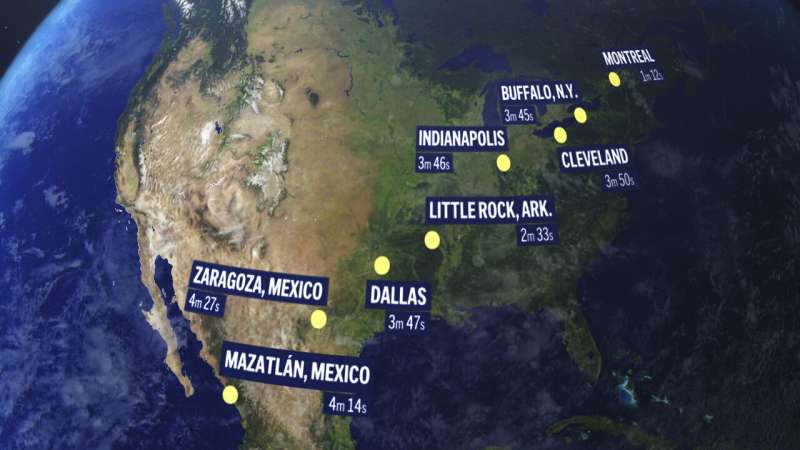The best bet for clear skies: northern New England into Canada.
Rebecca Aman traveled from Chicago to Dallas, figuring that Texas had the best odds for seeing the eclipse.
"I'm definitely nervous," Aman said. But she's trying "to enjoy the weekend as a whole, and keep a positive spirit."
The weather service is posting eclipse updates through the weekend
What other spots might see clouds?
Clouds could also block the view in parts of Ohio, Pennsylvania and New York, the weather service's latest forecast shows
There could be a clear patch from northern Arkansas to central Indiana, but there's still a lot of uncertainty about that section, Oravec said.
"If you're going to get clouds, hope to get high clouds," Oravec said. "Higher clouds are better—you can see through them."
Oravec himself made reservations for three three spots: He's ditched Texas and Rochester, New York, and has opted to travel to Indianapolis from his home in Maryland.
The weather service is warning that severe thunderstorms Monday evening and Tuesday in the Southern Plains and lower Mississippi Valley would make travel difficult after the eclipse.
The path of total darkness stretches from Mexico and Texas through Maine and parts of Canada.
How do I safely view the solar eclipse?
If clouds don't get in the way, viewers in the path wearing eclipse glasses will see the moon begin to slowly cover the sun until it is completely blocked, a period of darkness called totality, during which temperatures drop and the sun's corona will be visible.
During totality when the sun is completely shrouded, it's fine to remove your glasses and look with your naked eyes. But before and after, certified eclipse glasses are essential to avoid eye damage.
Cameras, binoculars and telescopes must be outfitted with special solar filters for safe viewing.
How can I see the solar eclipse if it's cloudy or rained out?
You can still watch the total solar eclipse online.
Associated Press journalists will also bring live coverage of the eclipse from across the path, starting at 10 a.m. EDT with views from Mazatlán, Mexico, and other locations.
NASA will stream telescope views of the sun and on NASA TV starting at 1 p.m. EDT.
The Exploratorium museum, Time and Date and Slooh will also broadcast eclipse day views.
© 2024 The Associated Press. All rights reserved. This material may not be published, broadcast, rewritten or redistributed without permission.



